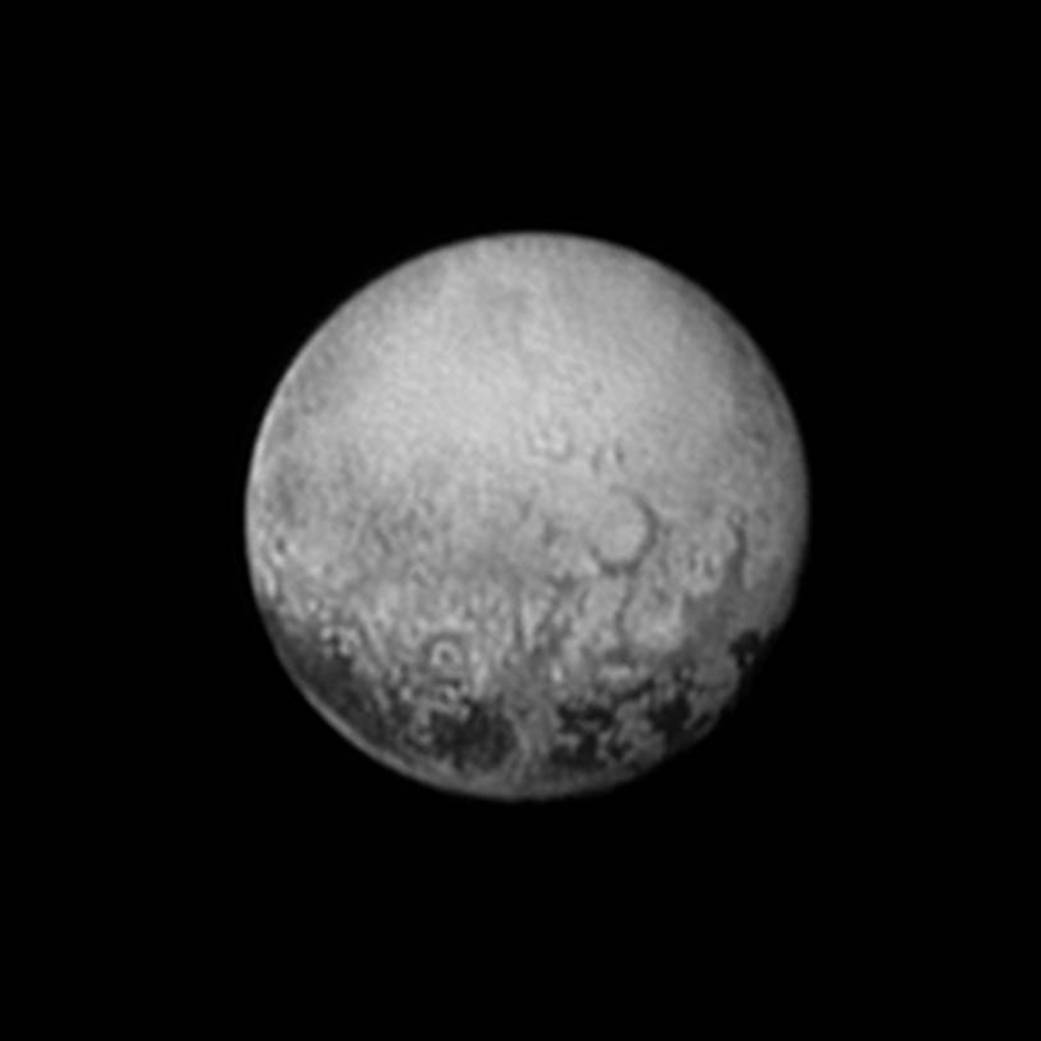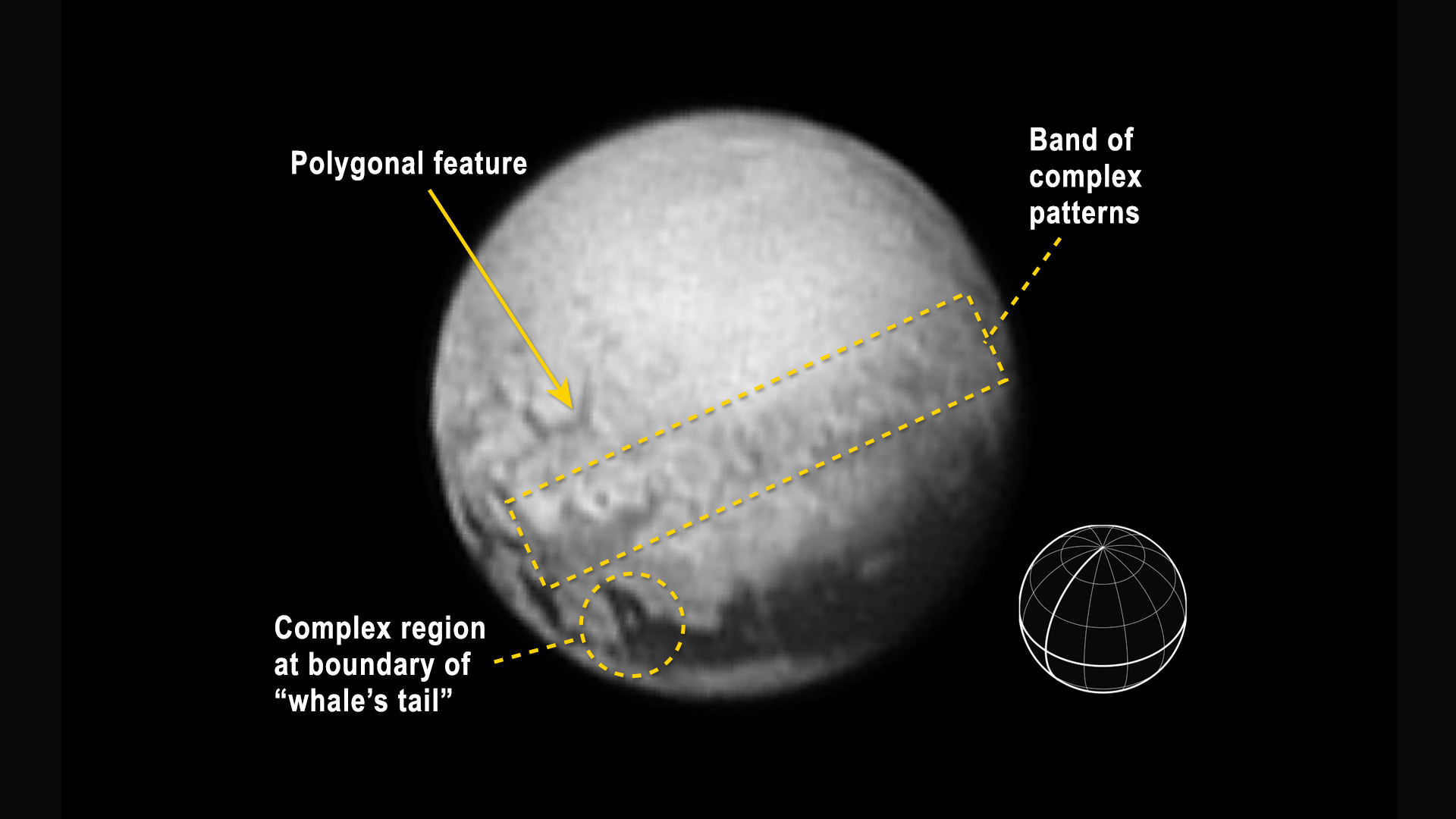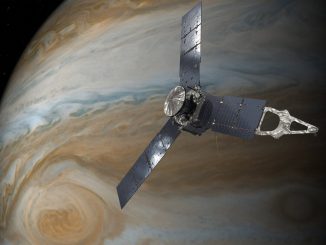
The New Horizons spacecraft has captured its last view of mysterious dark blotches strung across Pluto’s equator, and the spots could keep scientists guessing about their origin for decades.
The long-range imager aboard the New Horizons spacecraft is getting a global view of Pluto as the distant world spins about its axis, but it will only see part of the dwarf planet when it makes its closest approach less than 8,000 miles away Tuesday.
The dark spots, each stretching hundreds of miles across, are scattered evenly across Pluto’s equatorial region. They appear near the bottom of the images because New Horizons is approaching Pluto from above its northern hemisphere.
“It’s weird that they’re spaced so regularly,” said Curt Niebur, New Horizons program scientist at NASA Headquarters in Washington.
Scientists say the dark regions are about 300 miles across, about the size of the state of Missouri. New Horizons first imaged the spots in late June, and researchers highlighted the discovery in a press release July 1.
The latest picture of the dark markings came down from New Horizons on Saturday, revealing distinct, irregular borders between the spots and brighter areas.
Pluto rotates every 6.4 Earth days, so Saturday marked about one-half of a Pluto day before New Horizons gets its close-up views. The plutonium-powered spacecraft will fly over a region on the opposite side of Pluto from the dark spots, and on departure will see Pluto’s night side and southern hemisphere, which is in the middle of a long winter.

The markings are on the side of Pluto always facing its largest moon Charon, which is tidally locked its parent body, similar to how one face of Earth’s moon always is never seen from the ground.
“We can’t tell whether they’re plateaus or plains, or whether they’re brightness variations on a completely smooth surface,” said Jeff Moore, geology, geophysics and imaging team leader from NASA’s Ames Research Center in California.
“When we combine images like this of the far side with composition and color data the spacecraft has already acquired but not yet sent to Earth, we expect to be able to read the history of this face of Pluto,” Moore said.
Alan Stern, New Horizons principal investigator, said the image of the dark spots captured early Saturday is “the last, best look that anyone will have of Pluto’s far side for decades to come.”
Email the author.
Follow Stephen Clark on Twitter: @StephenClark1.



